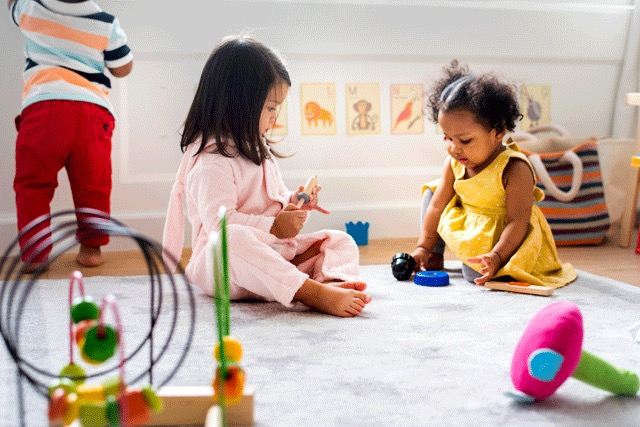One of the most important ways families, teachers, and caregivers of young dual language learners (DLLs) can promote development is by connecting words children have learned in their home language to words in English. The development of oral language is a foundation for later reading. It is very important to encourage the development of strong oral language skills in the child’s home language.
As more young DLLs enter child care and other preschool settings, their families, teachers, and caregivers wonder about how to support early development. The Expressive Communication section of the 2013 Illinois Early Learning Guidelines for Children Birth to Age Three includes strategies for interaction to help children develop a large and rich vocabulary. Below are recommendations for family members and other caregivers to help develop a young DLL’s oral language skills:
- Show appreciation when the child is attempting new words in either language.
- Talk and read with the child often; use words and books that reflect the home culture.
- Narrate what is occurring throughout the child’s day (e.g., “Let’s sit down and have lunch”).
When families, teachers, and other caregivers focus on young children’s oral language development in their home language, they set the stage for future success in early literacy and reading skills in both their home language and in English (Magruder, Hayslip, Espinosa, & Matera, 2013). A strong oral language foundation in the home language enhances communication between families and their young children and is a basis for later reading and writing in both the home language and English.

Tania Madrigal
Tania Madrigal is a dual-language early childhood teacher at the Champaign Early Childhood Center. She has taught in a dual-language early childhood special education classroom for 15+ years. At home, Tania is a parent of two children who are learning both English and Spanish, as well as three cats.
Biography current as of 2022
Reference
- Magruder, E.S. & Hayslip, W.W. & Espinosa, Linda & Oliva-Olson, Carola. (2013). Many languages, one teacher: Supporting language and literacy development for preschool dual language learners. Young Children, 68, 8-15.


